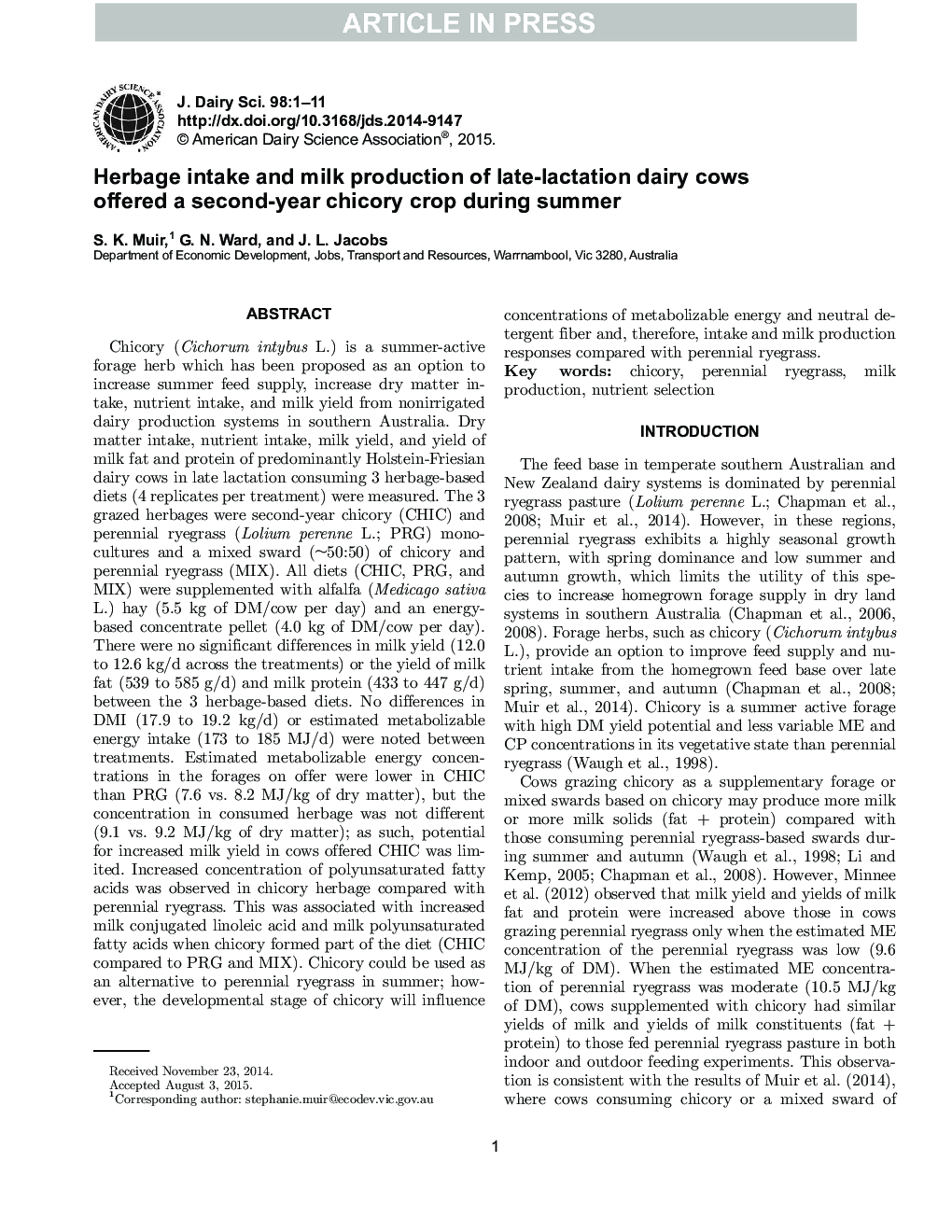| Article ID | Journal | Published Year | Pages | File Type |
|---|---|---|---|---|
| 10973419 | Journal of Dairy Science | 2015 | 11 Pages |
Abstract
Chicory (Cichorum intybus L.) is a summer-active forage herb which has been proposed as an option to increase summer feed supply, increase dry matter intake, nutrient intake, and milk yield from nonirrigated dairy production systems in southern Australia. Dry matter intake, nutrient intake, milk yield, and yield of milk fat and protein of predominantly Holstein-Friesian dairy cows in late lactation consuming 3 herbage-based diets (4 replicates per treatment) were measured. The 3 grazed herbages were second-year chicory (CHIC) and perennial ryegrass (Lolium perenne L.; PRG) monocultures and a mixed sward (~50:50) of chicory and perennial ryegrass (MIX). All diets (CHIC, PRG, and MIX) were supplemented with alfalfa (Medicago sativa L.) hay (5.5Â kg of DM/cow per day) and an energy-based concentrate pellet (4.0Â kg of DM/cow per day). There were no significant differences in milk yield (12.0 to 12.6Â kg/d across the treatments) or the yield of milk fat (539 to 585Â g/d) and milk protein (433 to 447Â g/d) between the 3 herbage-based diets. No differences in DMI (17.9 to 19.2Â kg/d) or estimated metabolizable energy intake (173 to 185Â MJ/d) were noted between treatments. Estimated metabolizable energy concentrations in the forages on offer were lower in CHIC than PRG (7.6 vs. 8.2Â MJ/kg of dry matter), but the concentration in consumed herbage was not different (9.1 vs. 9.2Â MJ/kg of dry matter); as such, potential for increased milk yield in cows offered CHIC was limited. Increased concentration of polyunsaturated fatty acids was observed in chicory herbage compared with perennial ryegrass. This was associated with increased milk conjugated linoleic acid and milk polyunsaturated fatty acids when chicory formed part of the diet (CHIC compared to PRG and MIX). Chicory could be used as an alternative to perennial ryegrass in summer; however, the developmental stage of chicory will influence concentrations of metabolizable energy and neutral detergent fiber and, therefore, intake and milk production responses compared with perennial ryegrass.
Related Topics
Life Sciences
Agricultural and Biological Sciences
Animal Science and Zoology
Authors
S.K. Muir, G.N. Ward, J.L. Jacobs,
